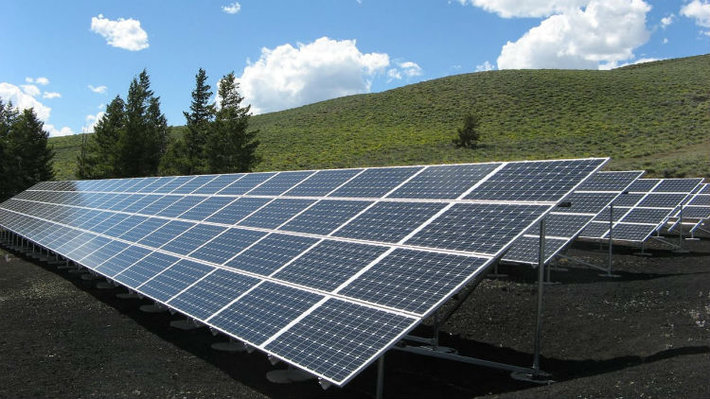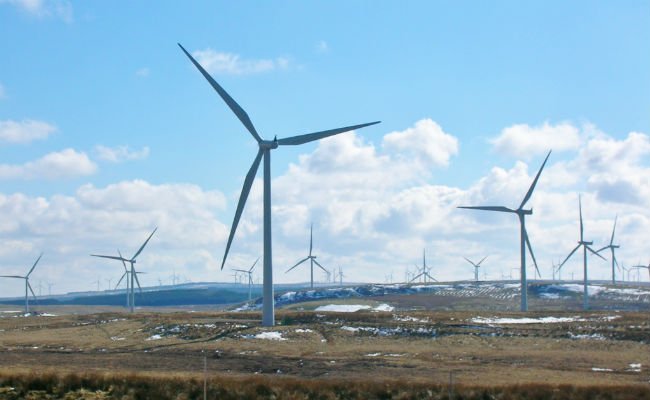A vast Chinese province of nearly 6 million people has generated all the power it needed for an entire week without using any fossil fuels, according to state-run Chinese media. Qinghai, a Tibetan plateau province in the country’s northwest, derived all of its power from wind, solar, and hydro-electricity from June 17 to June 23. The experiment was part of a trial run by the government to see if the electricity grid could cope without the kind of constant, reliable energy normally provided by fossil fuels.
Continue reading... →The coal industry is in “freefall” worldwide according to the latest annual survey from environmental groups Sierra Club, Greenpeace, and CoalSwarm. According to the survey, new construction and coal plant permits in China and India have sharply dropped off, while aging coal plants were retired across the U.S. and Europe. (The U.S. saw its 250th coal plant retirement on Monday.) The decline of coal has been felt for decades in places like rural West Virginia, and while Trump campaigned on a promise to revive the industry, the survey shows that its decline may be inevitable—while the market share of renewable energy, and potential for sustainable jobs in that sector, continues to rise.
Continue reading... →Roughly 250,000 people call the “domestically dependent” sovereign Navajo Nation home. It is a place full of diverse landscapes, tradition, beauty, and history. Many inhabitants live in such remote places that simple amenities like running water, power and lights aren’t available. Miles of rugged dirt roads separate neighbors and the cost of running power and water to each home becomes fiscally impossible. Thus, over 18,000 homes are without power. Part of a larger ongoing operation run by Elephant Energy, known as Eagle Energy to the Navajo, a non-profit dedicated to resolving the energy access issues in Africa and in the Navajo Nation, Eagle Energy and The Honnold Foundation partnered with Goal Zero, The North Face, and Clif Bar to install solar panels and lights on rural homes and to donate to an entrepreneurship program Eagle Energy has already set in motion.
Continue reading... →Despite our increasing usage of renewable energy, there are still some big hurdles to achieving sustainability. The most recent challenge, which underlines the need for increased investment in renewables, comes in the form of storing renewable energy for later use. Most of us became familiar with the concept of cryogenic storage in the Sci-Fi movies and comic books we enjoyed as kids. While this actually deals with the preservation of usable electricity instead of human bodies, the idea is very much the same. Thanks to some recent breakthroughs, scientists have found that we can freeze energy via liquid nitrogen or liquid air. A process that works by collecting the heat dissipation that occurs by exposing incoming electricity to extremely low temperatures, cryogenic energy storage is an attractive option on account of its relatively low cost and its smaller physical storage requirements.
Continue reading... →In a big win for renewable energy, the cost of solar and wind power has plummeted in recent years, making it the same price as traditional fossil fuels in about 30 countries, according to a new report from the World Economic Forum (WEF). The cost of solar energy has dropped 80% since 2009, and wind energy has dropped by 30% in the last three years. This shift means more countries have reached “grid parity” — where the cost of fossil fuels and renewable energy are the same.
Continue reading... →Flooring can be made from any number of sustainable materials, making it, generally, an eco-friendly feature in homes and businesses alike. Now, however, flooring could be even more “green,” thanks to an inexpensive, simple method developed by University of Wisconsin–Madison materials engineers that allows them to convert footsteps into usable electricity. Wood pulp, which is already a common component of flooring, is partly made of cellulose nanofibers. They’re tiny fibers that, when chemically treated, produce an electrical charge when they come into contact with untreated nanofibers.
Continue reading... →Off the coast of North Carolina, two friends are developing a new way to desalinate water—a notoriously high-energy, high-cost process. Their solution: use the power of the ocean itself to clean the water of its impurities.Justin Sonnett and Chris Matthews first came up with the SAROS desalination buoy while at the University of North Carolina at Charlotte. They’ve since set up a company and worked on their floating prototype for more than two years. Now, they’re looking for support on Indiegogo.
Continue reading... →For me, the holidays are a time to reflect on what we’ve achieved over the past year and look ahead to the challenges and possibilities the New Year holds in store. 2012 was a quite a year. Besides the obvious big story – the reelection of President Obama – here’s a list of my ten favorite stories of the year.
Continue reading... →






